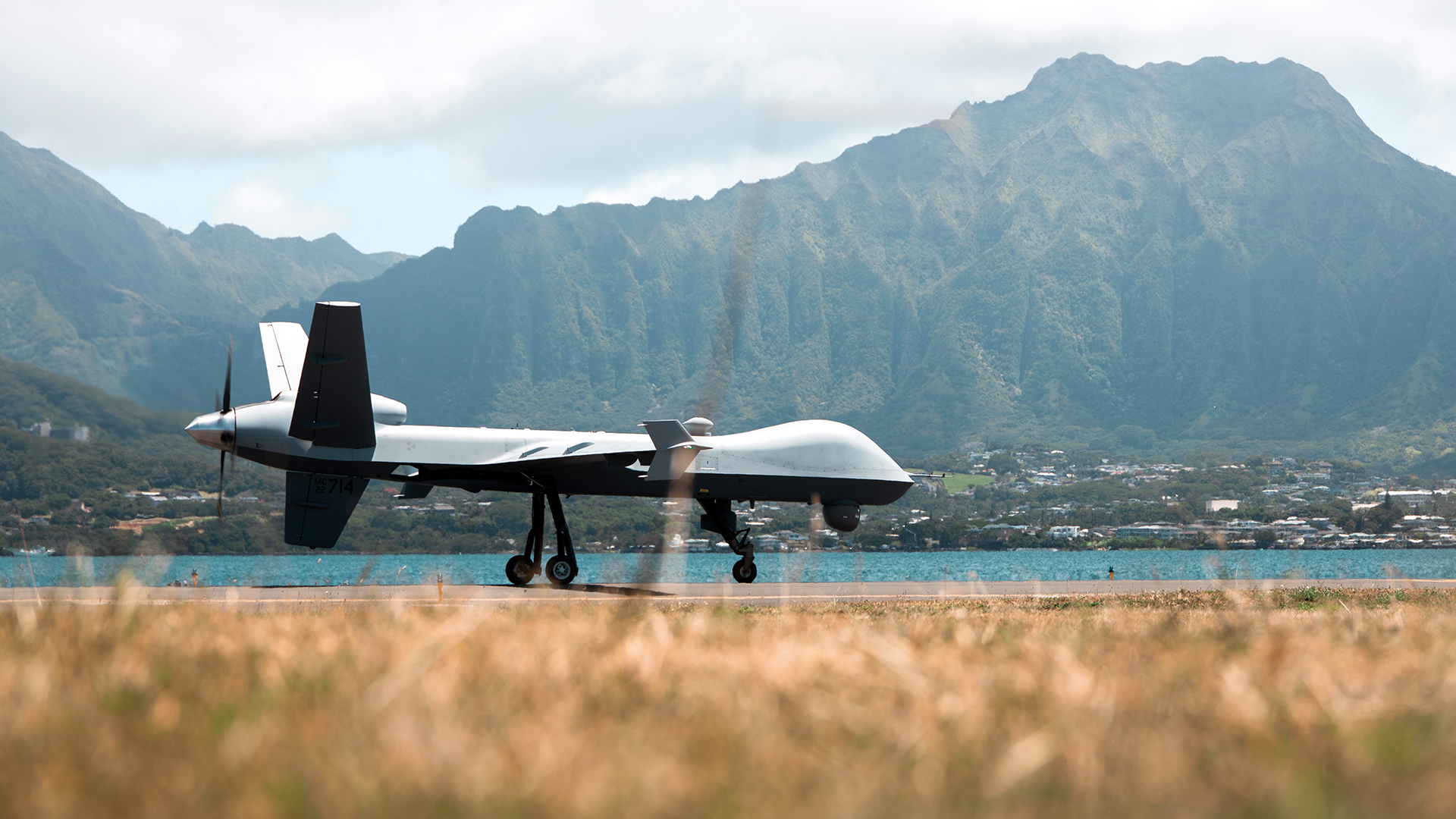Operational Test and Evaluation Squadron One (VMX-1), the specialized Marine Corps unit tasked with operationalizing innovations for the service’s air arm, is about to receive two MQ-9 Reapers. The addition of the combat-proven drones into VMX-1’s diverse stable will allow the squadron to deliver new capabilities to the Marine Air-Ground Task Force (MAGTF) and improve the ways the service’s existing MQ-9s can be used in future high-end conflicts. It will also work to pave the way to an increasingly uncrewed future for the Corps.

Author’s note: This is the third in a multi-part series covering VMX-1’s highly unique mission, diverse stable of aircraft, and the critical role it is playing in shaping the future of Marine Corps aviation. You can check out the first and second installments here and here.
Road to Reaper
Over the last few decades, the United States Marine Corps has focused its procurement of unmanned aerial systems (UAS) on tactical expeditionary types that had limited range and small payloads. That began to change in 2016 when the Marines began looking at a large Group 5 unmanned aerial system that would operate from a ship, providing long-range, long-endurance capabilities for the Marine Air-Ground Task Force, as well as the U.S. Navy’s fleet. That program was known as ‘MUX-MALE’, standing for Marine Air Ground Task Force Unmanned Expeditionary (MUX) Medium-Altitude, High-Endurance (MALE).
While the initiative was intended to assist the Amphibious Ready Group and Marine Expeditionary Unit (ARG/MEU) team via performing a host of missions, the Marines realized it couldn’t get the long endurance it needed for missions like airborne early warning with a tilt-rotor type air vehicle that could take off vertically from a ship’s helicopter deck. The Marines soon abandoned their plan to field such a drone on amphibious ships. Instead, the service focused on quickly procuring a large land-based unmanned aerial vehicle and a separate design for use on amphibious ships.
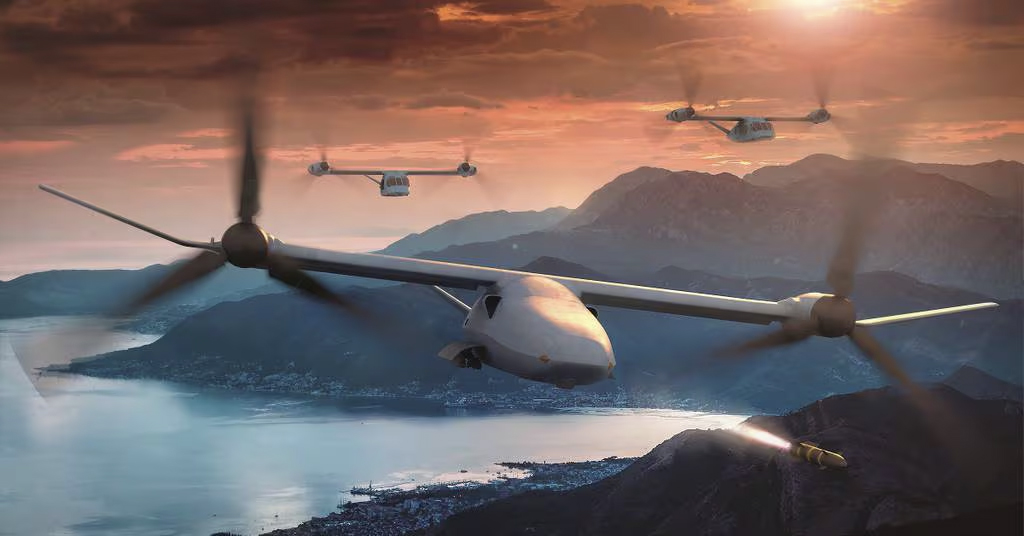
In 2018, the Marine Corps began operating two MQ-9s Reapers leased from the drone’s manufacturer, General Atomics. In late 2020, the service was granted authorization to purchase the first two of several MQ-9A Block 5 extended-range Reapers. The drones provided a huge leap in capability over the much smaller legacy RQ-7 Shadow and RQ-21 Blackjacks.
Currently, all three Marine unmanned aerial vehicle squadrons (VMUs) have begun the transition from RQ-21A to MQ-9A and the service will be completely divested of these types by the end of this year. The Reaper purchases fulfilled the MUX Initial Capabilities Document (ICD) Tier 1 requirements through a mid-tier acquisition program with the United States Air Force. This helped the Marines to rapidly acquire the Reapers with pilot and sensor operator training being conducted through an inter-service training agreement between the Marines and the Air Force.
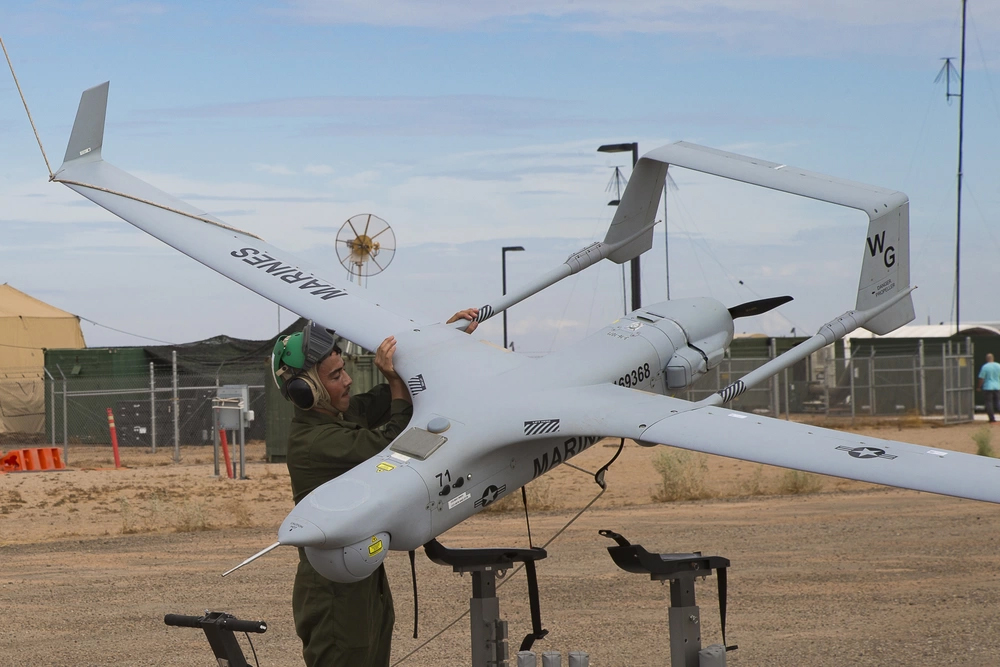
Marine Unmanned Aerial Vehicle Squadron One (VMU-1) became the first USMC squadron to operate the MQ-9 in 2021 after receiving two examples of the type. Although the squadron is based at Marine Corp Air Station (MCAS) Yuma in Arizona, the MQ-9s have never flown from the base. Rather, VMU-1 has been operating the Reapers at undisclosed locations outside of the United States since they were received. In 2023, VMU-3 began to receive their MQ-9s at MCAS Kaneohe Bay in Hawaii. Known as the ‘Phantoms’, VMU-3 provides aerial reconnaissance for the newly formed 3rd Marine Littoral Regiment, which was created as part of Force Design 2030.
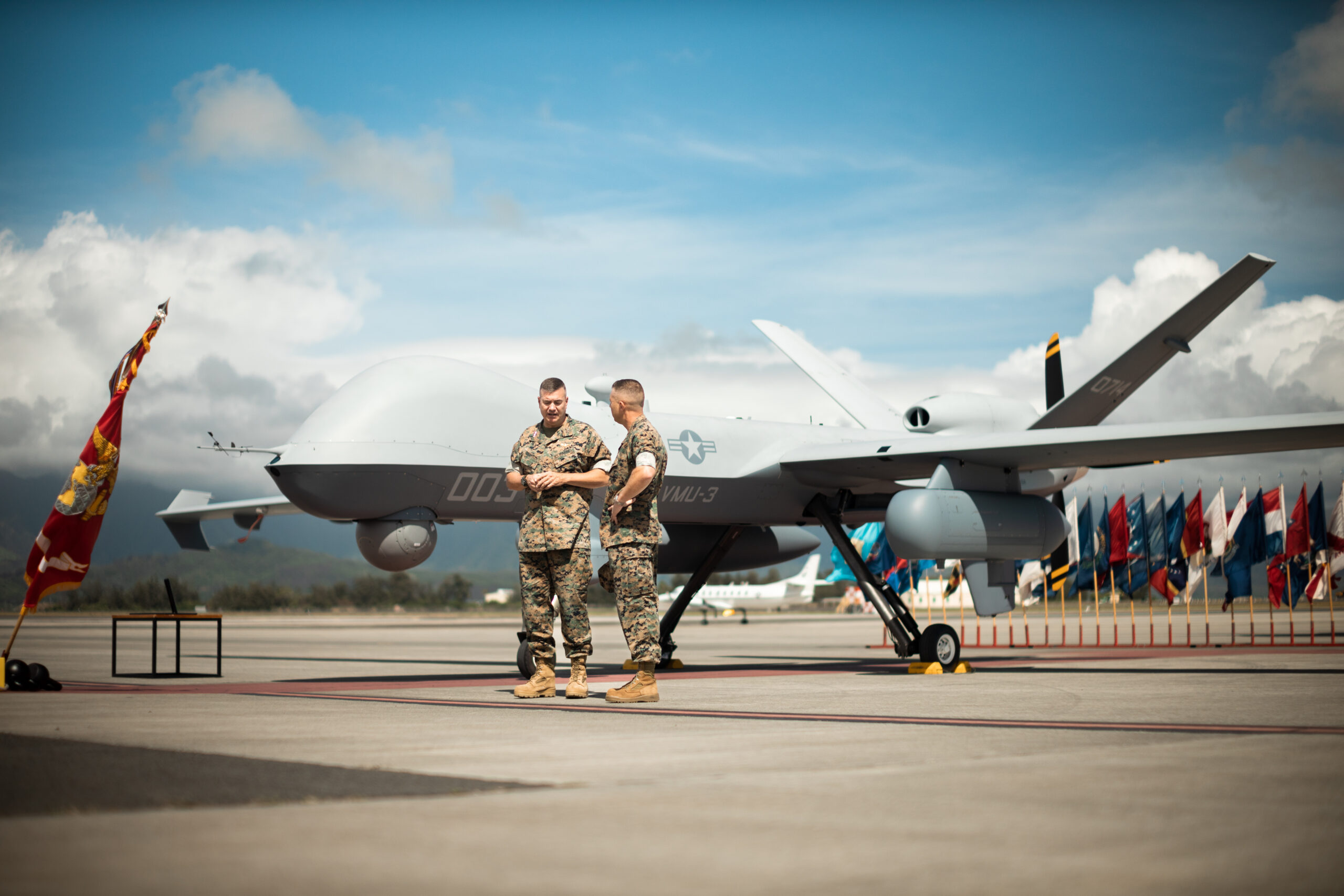
According to the 2022 Marine Corps Aviation Plan:
“The USMC will employ the MQ-9A with a suite of add-on pods to support the Marine Littoral Regiment as the stand-in force. The aircraft will provide Intelligence, Surveillance, Reconnaissance and Targeting (ISR-T) as well as performing additional missions such as: Maritime Domain Awareness (MDA), Airborne Network Extension (ANE), Airborne Early Warning (AEW) and Electronic Support (ES).“
MQ-9 future employment, Marine style
While Marine MQ-9s have been out doing their work operationally for some time now, this summer VMX-1 at MCAS Yuma will get its first Reapers to help the service introduce what they hope will be a host of new capabilities. The squadron will also get four pilots and three sensor operators along with its own ground control station (GCS).
VMX-1’s former Operational Test Director Lt. Col. Guyette explained, “The MQ-9 is an incredibly successful platform that was designed to do a very specific mission. It has a great track record of success with millions of hours flown. The Marine Corps looks at MQ-9 in the broader context of MUL-MALE. The MQ-9 is our first platform that meets some of the objectives of the program. The things we are trying to do with MUX-MALE are persistent ISR [Intelligence, Surveillance, and Reconnaissance], C2 [Command and Control] connectivity, and long-range EW [Electronic Warfare] support at the operational and tactical level. So, gathering, transmitting, and relaying information in a mesh. We don’t want one $15 billion dollar satellite that an adversary country can focus on for 10 years and reliably apply kinetic or non-kinetic effects against when the balloon goes up. We would rather have 50 platforms that if targeted, the system can tolerate the loss and adapt in real time. Making the connective tissue airborne, is my opinion of what MUX-MALE is about.”
VMX-1 has been working hand-in-hand with both the Air Force and VMU-1, which has been operating the MQ-9 overseas for the last few years. VMU-1 also operates an MQ-9 GCS at MCAS Yuma, which gives VMX-1 the ability to hit the ground running when they receive their Reapers.
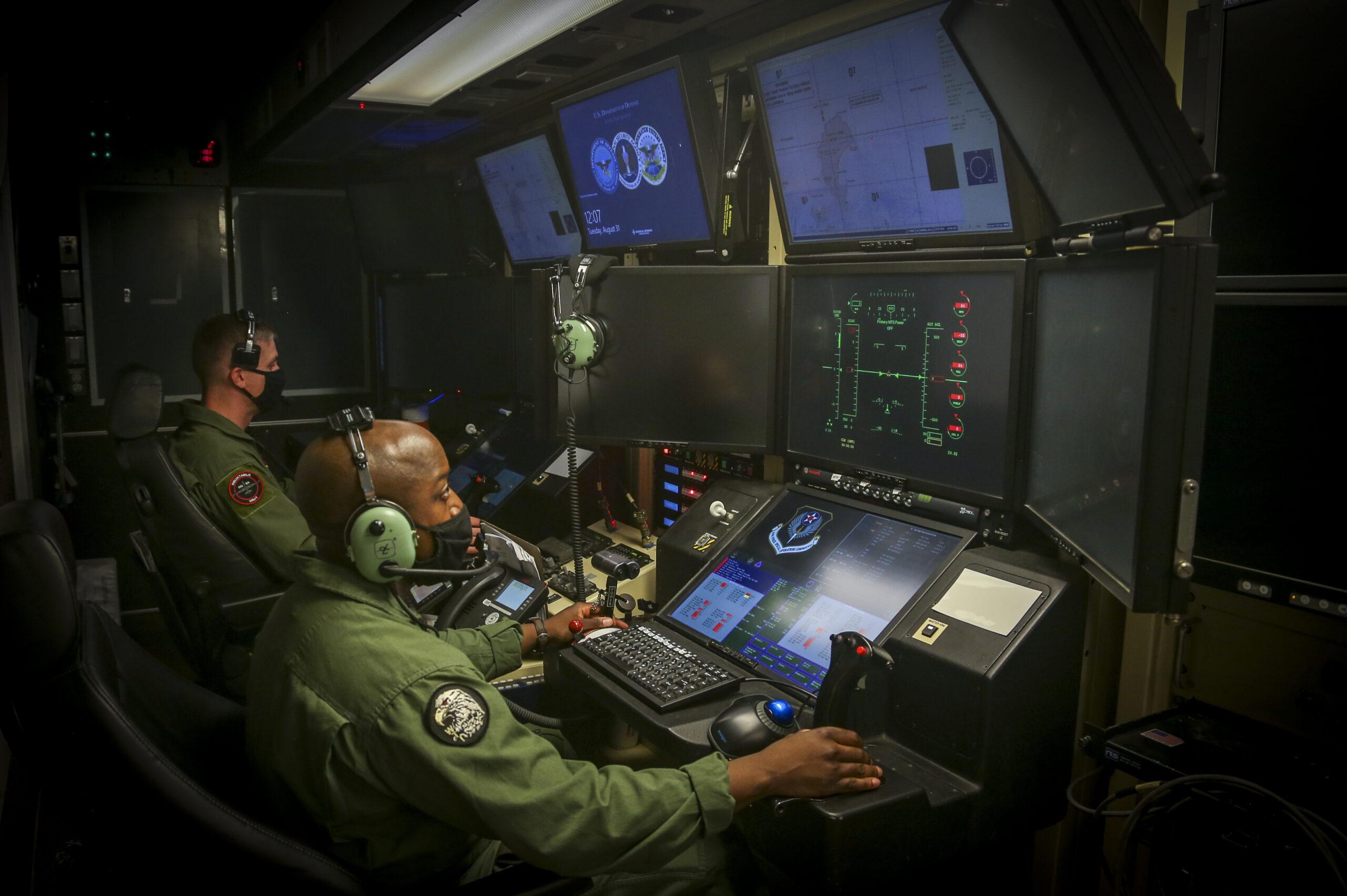
Guyette continued:
“MQ-9 is where we learn to build the connective tissue and operate it. We will rapidly move on with our partners in industry to develop even more capable platforms to solve the problem. The Marines have taken the lead on a lot of different podded capabilities with the MQ-9. The organizational part of that is somewhat interesting because how do we acquire it and how do we sustain it if it is not an ACAT-1 program [Acquisition Category-1 programs are major defense acquisition programs]. It does present us with a tremendous capability to be agile in terms of our acquisition. If we try something out and we like it, then we can build a whole bunch of them. If we don’t like it, then we can move on to the next thing. Because the MQ-9 is such an established and stable platform, we don’t have to worry about the vehicle very much because we know it has millions of flight hours. We can rapidly bolt things on and take them off. Besides weight, power, and cooling restraints, we know aerodynamically we can support this.”
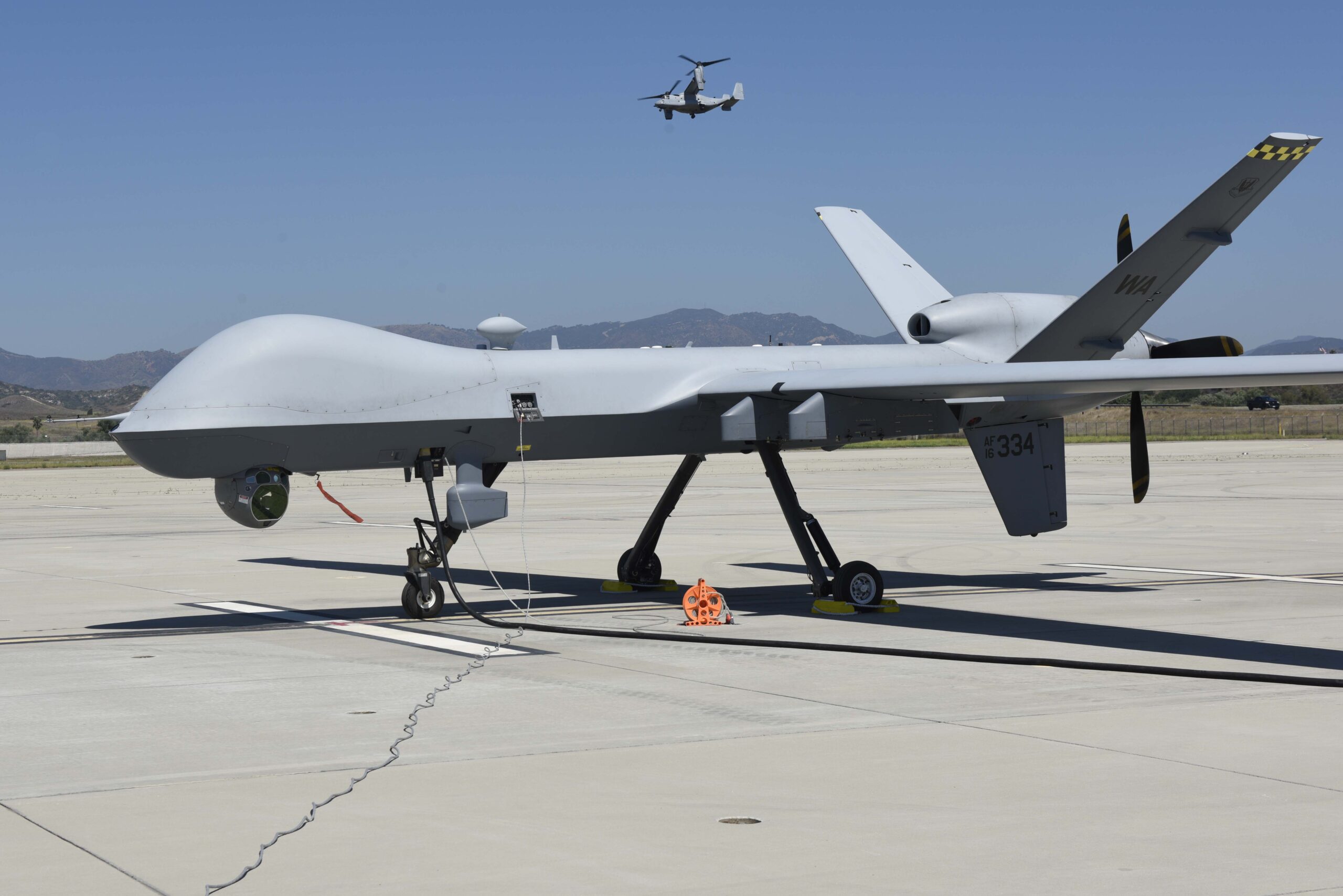
In May, the Navy announced its intent to procure hardware needed to integrate the Sky Tower 1 Pod onto the Reaper. The pod has an improved airborne network extension (ANE) capability, which will enable the sharing of information across multiple waveforms and data networks. When deployed with the Sky Tower pods, Marine MQ-9s will serve as a critical link between the MAGTF as it will connect both the aviation and ground combat elements, providing enhanced multi-domain situational awareness and command-and-control.

Major Daniel ‘Ghandi’ DeLara serves in the Tactics and Integration department within VMX-1 and is an MQ-9 pilot. He previously operated the RQ-7 Shadow. DeLara told The War Zone:
“We will run tests on any sensor payloads that big Marine Corps buys. We will test the sensors and their capabilities, and we will also be supporting local exercises such as the weapons tactics instructor courses and ITX [Integrated Training Exercise].”
For the recent Obsidian Iceberg exercise, Marines worked with an Air Force MQ-9 out of March Air Reserve Base in California.
DeLara added: “We set up at 14,000 feet and put eyes on the objective with the EO/IR [electro-optical/infrared] sensor. We were running overwatch and SAR (synthetic aperture radar). It allows us to get certain levels of fidelity of the node. What we hope to get out of this exercise is laying the foundation for the future with TTPS [Tactics, Techniques and Procedures] using the SAR to help find places to land for manned aviation. We can run a Reaper overhead and say either there are no obstacles on that road, or there are some obstacles, and they are this tall and they are this far from the road. The neat thing about the SAR capability is that it can see through clouds so we can be about the marine layer and still see. As far as relay, there were no pods on this bird during the exercise, but we still provided comms relay. In the future we will run relay through the Airborne Network Extension. There will be multi-waveforms going through the Reaper out to the other players in the battlespace.”
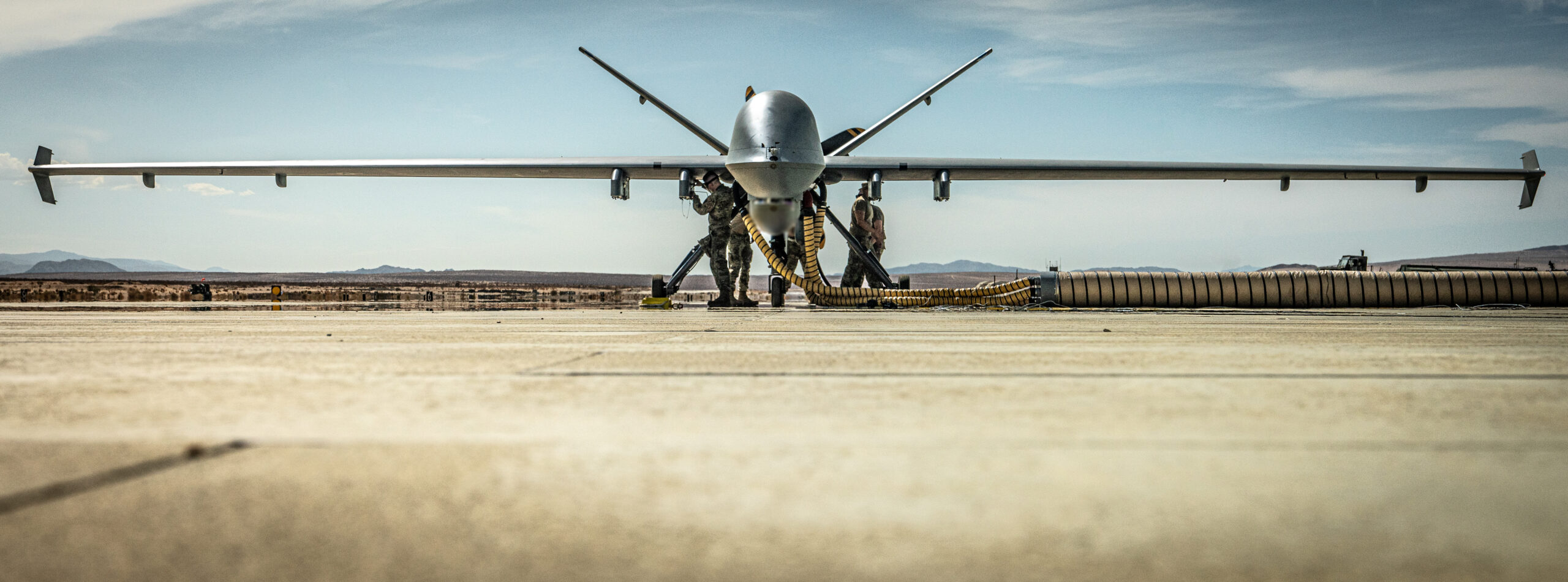
Having the SAR capability to quickly identify places to set up Expeditionary Air Basing Operations (EABO), is something Marine planners are very happy to get. Another great capability on the MQ-9 is SLR, which stands for Satcom Launch and Recovery.
DeLara explained:
“SLR is an automatic takeoff and landing function. It can be done via satellite. In the past you launched and landed the Reaper via line of sight and you stick and rudder it. You had a Launch and Recovery Element (LRE) overseas where they would start it up and get it to altitude for the handover. This new capability removes the big footprint that had to be forward where the Reaper was operating from. The MQ-9 launch and recovery process will only require a few Airmen for maintenance such as refueling”.
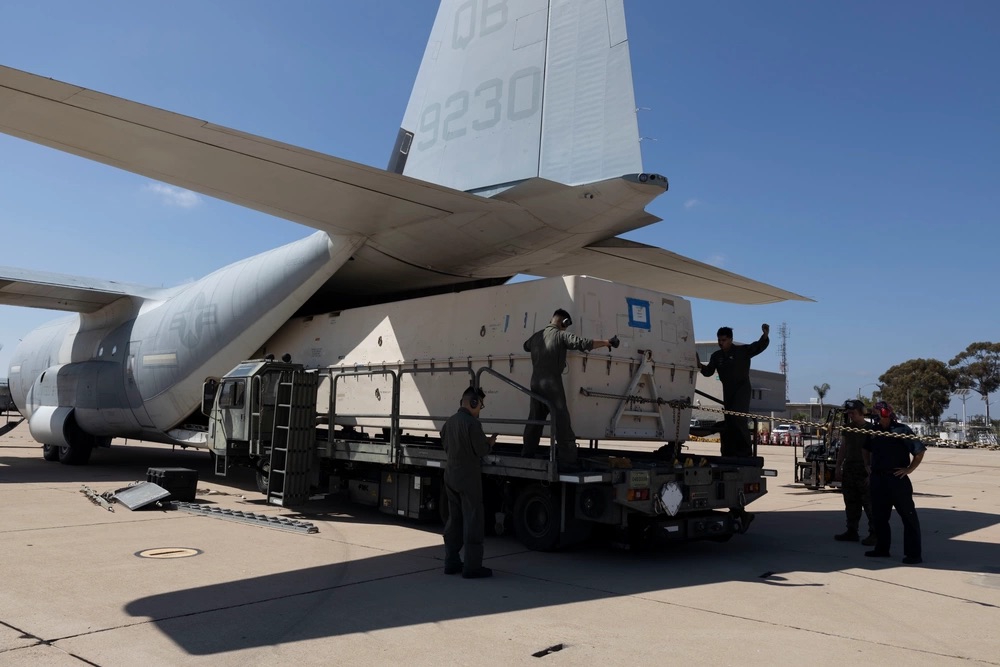
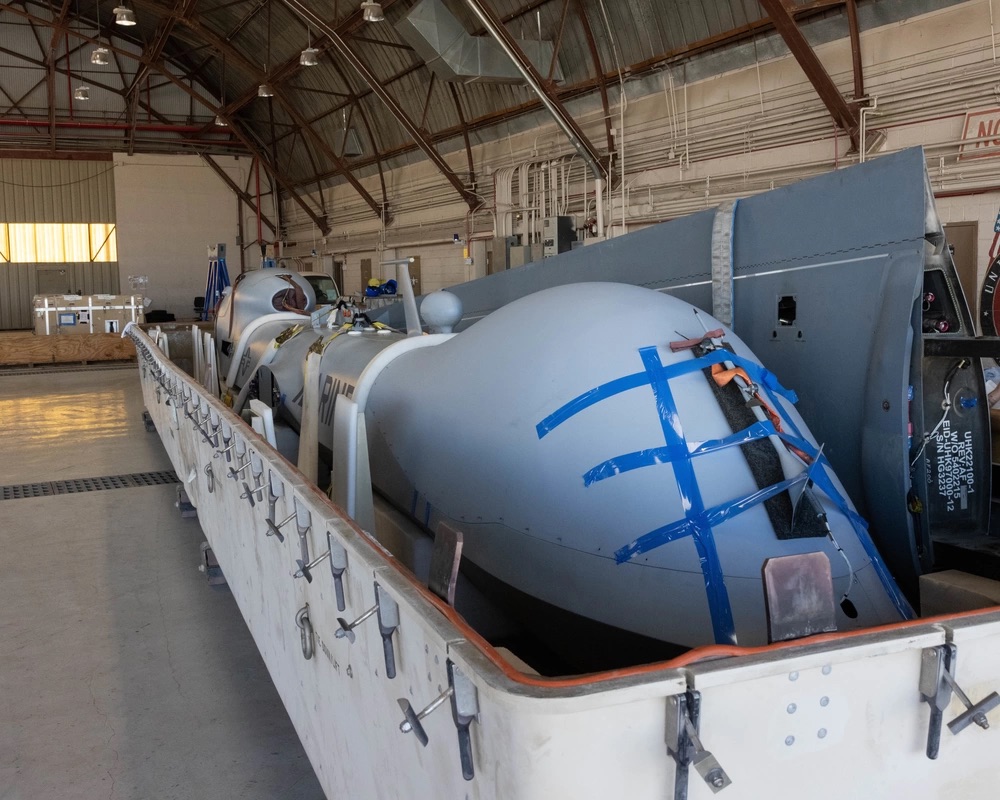
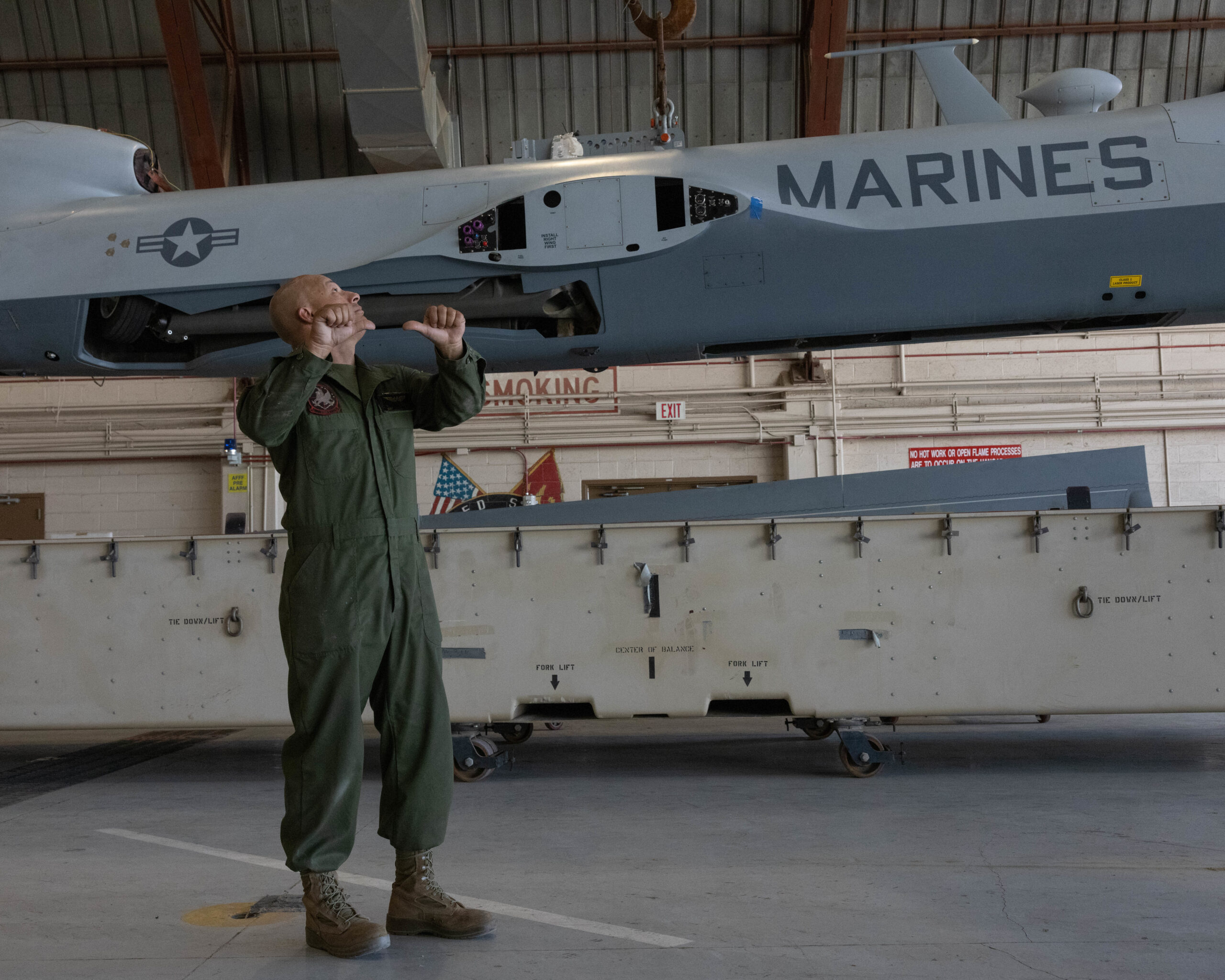
MCAS Yuma shares the runways with Yuma International Airport, so they are working with the Federal Aviation Administration (FAA) to get approval to operate the MQ-9s from there when they arrive. Marines are learning how to navigate these issues with the help of the USAF 174th Attack Wing which operated their MQ-9 from Syracuse International Airport in New York. The 174th became the first Air Force organization in the United States to fly remotely piloted aircraft in U.S. domestic class “C” airspace, which is the common airspace around commercial airports.
Looking ahead with Valkyrie
Another UAS that VMX-1 may one day incorporate into its operations and eventually the MAGTF is the XQ-58A Valkyrie. The Valkyrie is a highly autonomous, low-cost tactical unmanned air vehicle that the Marines hope to team up with its F-35s. The Marine Corps Warfighting Lab and the Deputy Commandant for Aviation’s Cunningham Group were among those that pushed for the service’s acquisition of a handful of XQ-58s under the Department of Defense’s Rapid Defense Experimentation Reserve (RDER) program. RDER accelerates the delivery of capabilities to the joint force.
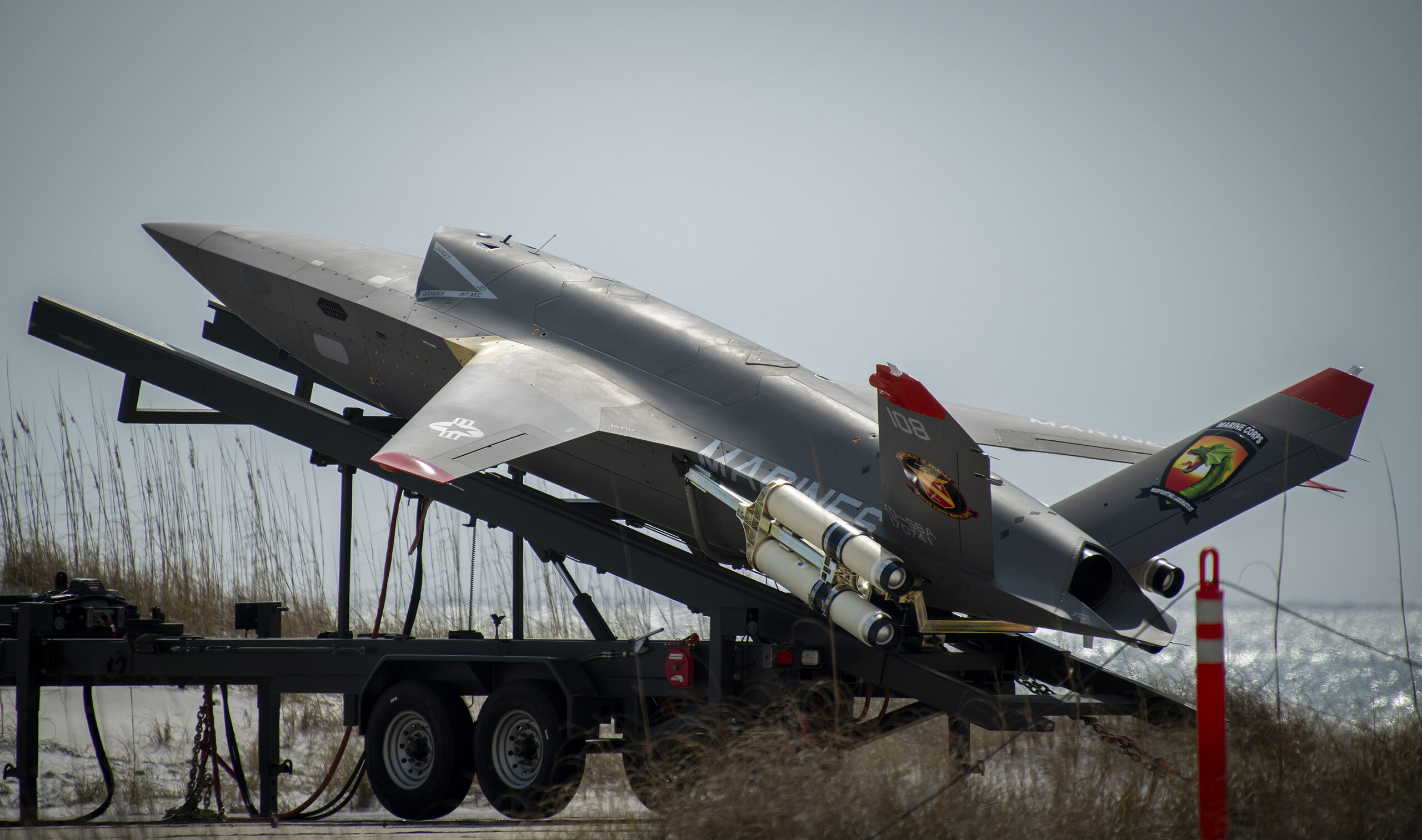
The Air Force was the first service to fly Valkyrie back in 2019, which was developed jointly by the Air Force’s Research Laboratory (AFRL) and Kratos. Currently, the Marine XQ-58s are supporting a program called the Penetrating Affordable Autonomous Collaborative Killer-Portfolio (PAACK-P). Valkyrie’s runway independence — it launches via rocket booster and recovers via parachute — is particularly relevant to the concepts of operations the Marines have been developing with EABO. With a potential ability to operate cooperatively with manned tactical jets and possibly in their own swarms, and carry weapons both internally and externally, VMX-1 is excited to team up the Valkyrie with their F-35s.
According to a USMC press release last month after a Marine XQ-58 completed its second test flight:
“Future test flights of the Marine Corps XQ-58A Valkyrie play an integral role in the Marine Corps’ efforts to modernize and enhance capabilities in a rapidly evolving security environment. The XQ-58A has a total of six planned test flights which will evaluate the effectiveness of autonomous electronic support to crewed platforms like the USMC F-35B Lightning II and the potential for AI-enabled platforms to augment combat air patrols. The XQ-58A is envisioned to provide capability to the Marine Air Ground Task Force that ranges from electronic warfare support to delivering or supporting lethal fires and kill chains – key contributions to other service-level research and development programs such as the Penetrating Affordable Autonomous Collaborative Killer Portfolio.“
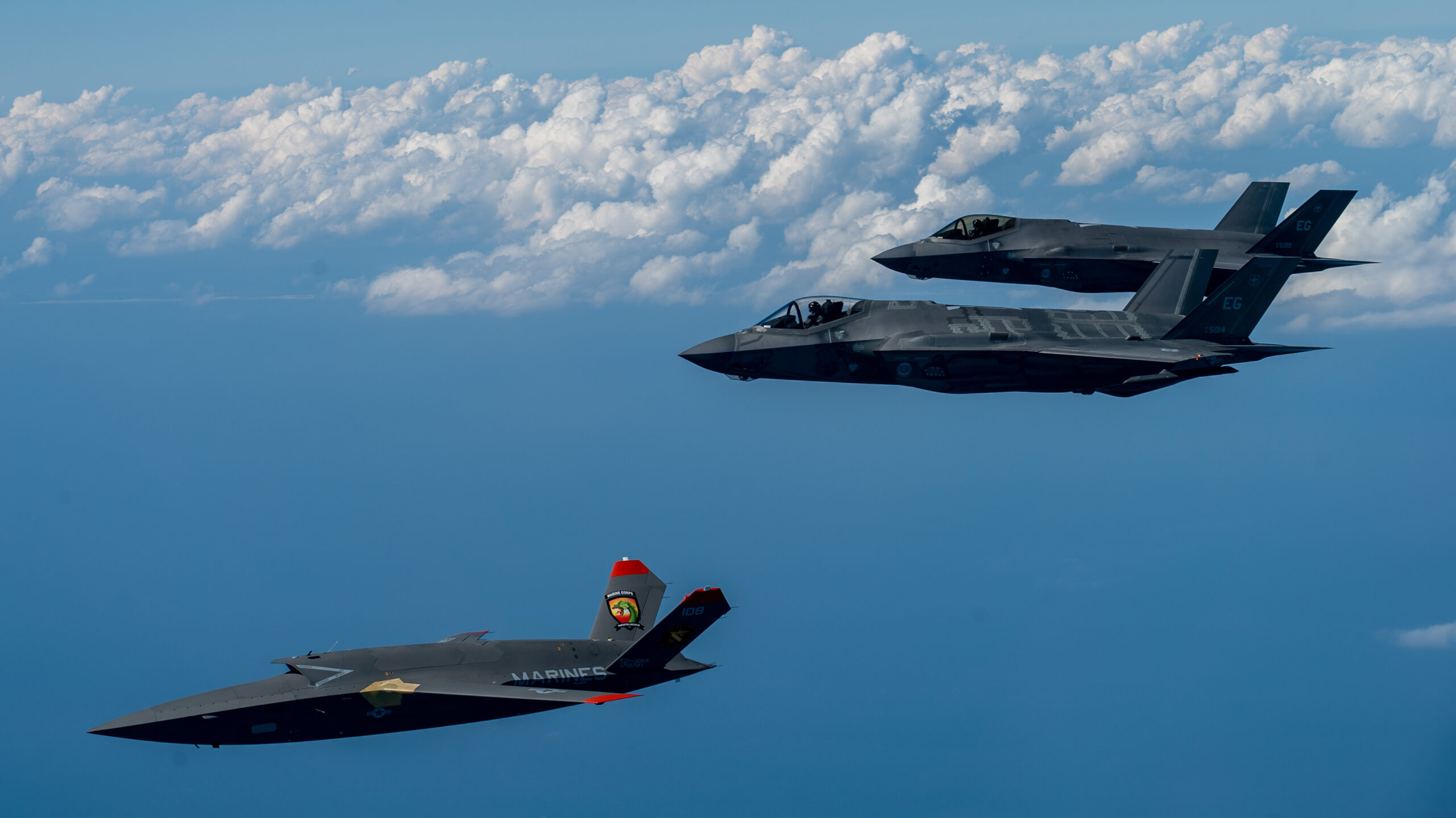
The thought of a host of XQ-58s operating alongside Marine F-35s as a ‘loyal wingman’ is an intriguing one for Marine planners. Lt. Col. Guyette explained:
“With the XQ-58 Valkyrie, we see a manned-unmanned teaming taking place. Not so much with the connective tissue but maybe in the future. It’s about leveraging the power of the human mind. The F-35 is imminently easier to fly. It’s like that for a reason because it frees up the pilot to do human things. Machines these days are really good at flying. I learned at DARPA [the Defense Advanced Research Projects Agency] that the way to win is to let machines do machine things and humans do human things. We are rapidly entering a world where physically controlling an aircraft is a machine thing. Making decisions and interpreting very complex tactical situations is a human thing and so if a human is free to do that, I can then fly multiple aircraft and apply solutions to extremely dynamic tactical situations. If I have multiple assets airborne with me that are unmanned, then I can team with them and solve those problems much more effectively.”
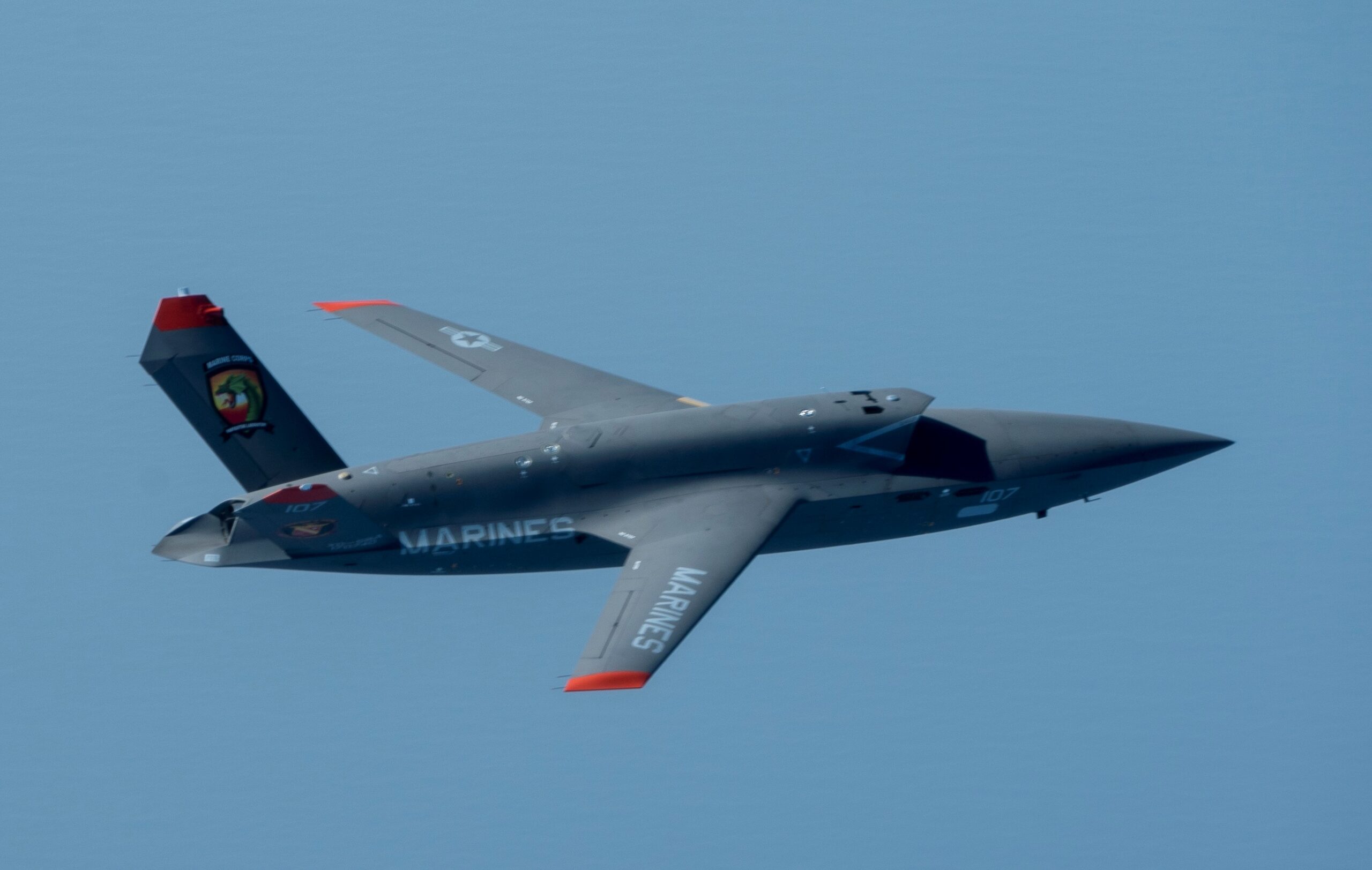
“The future is lightweight, lower cost distributed and agile. To be more specific, the days of individual monolithic systems present vulnerabilities and exposure that are unacceptable in tomorrow’s fight. When you are trying to takedown an SA-20 [U.S. military designation for the Russian S-300PMU-1/2 surface-to-air missile system] or an export surface-to-air missile system, I think we are rapidly realizing that something designed to shoot down fighter planes should not be attacked with fighter planes. It sounds silly when you say it like that but maybe something that is extremely easy to produce or less difficult to produce and something that is difficult to target might be better is a way for us to invert the cost/benefit ratio. What I mean by that is if they shoot an exquisite system at a cheaper blue asset, we are winning if they hit it because an exposure event launched it and the cost event by expending that round. Attacking things designed to shoot down fighter planes with fighter planes is not good business. This thinking is somewhat of a shift.”
As the Marines continue their shift towards new concepts set forward by former Commandant Gen. David Berger under Force Design 2030, both the MQ-9 and XQ-58 will help VMX-1 lay the foundation for Marine aviation to be prepared to come out victorious in any contingency they may face in the years to come.
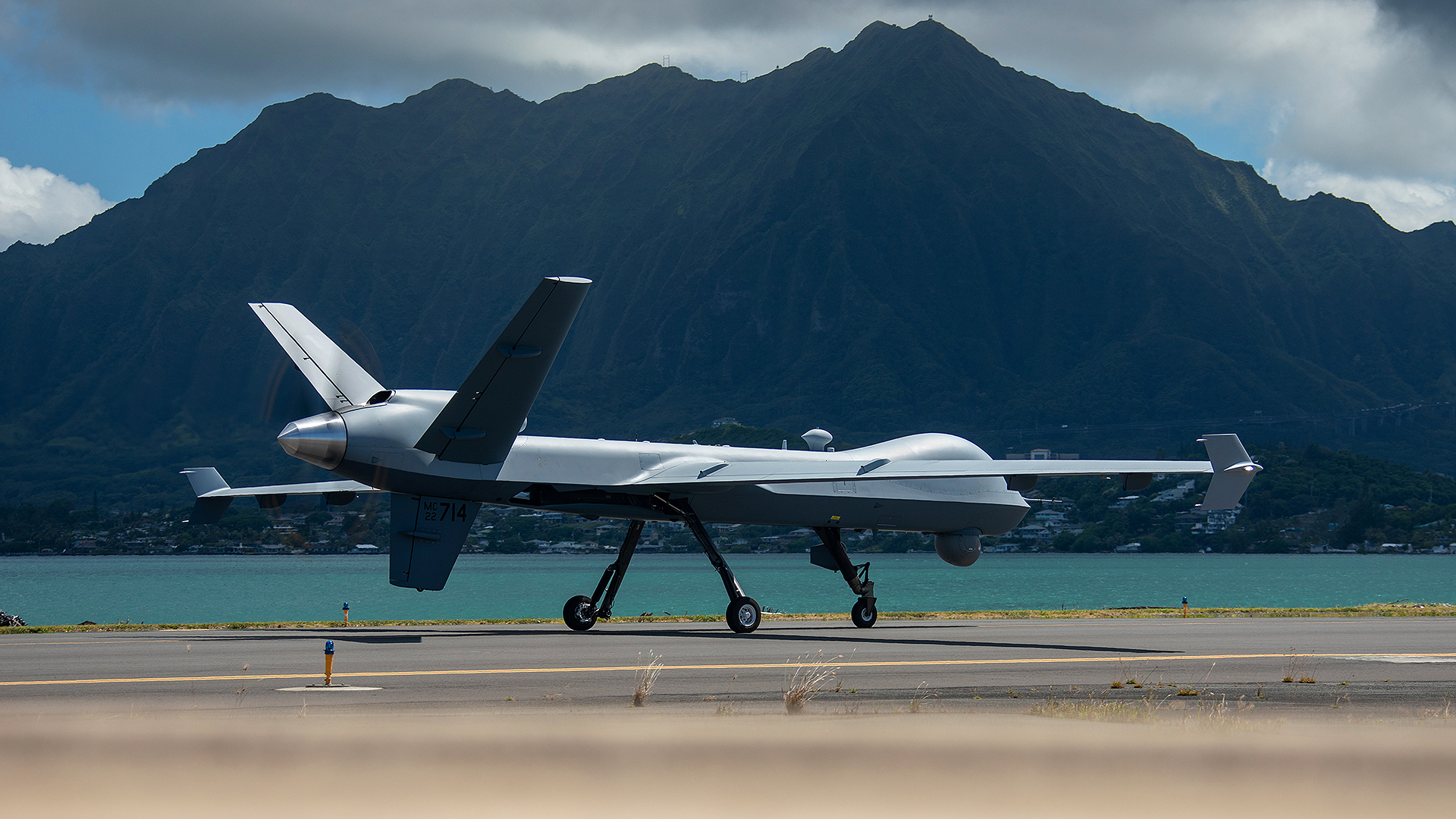
Contact the editor: tyler@twz.com
